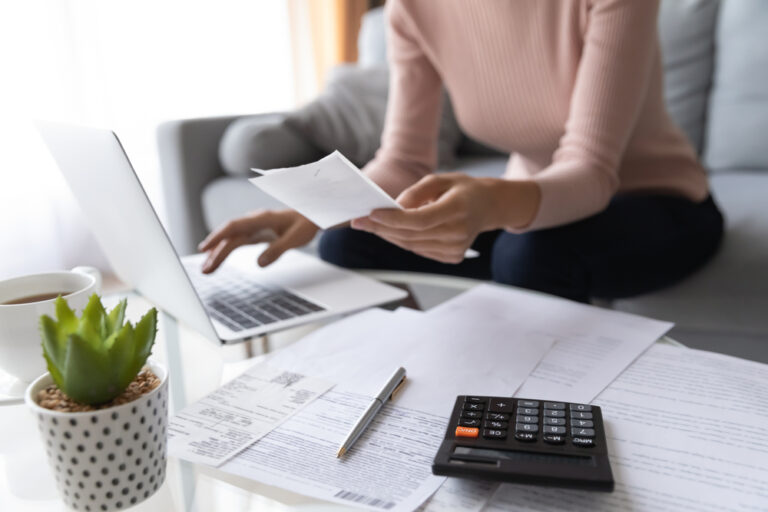If you’re a homeowner thinking about retirement, you might have heard of a reverse mortgage and wondered what it’s all about. It’s a way for people, usually aged 55 and over, to access some of the money tied up in their property without needing to sell it or move out.
In this guide, we’ll take you through the essentials, from how reverse mortgages work and the types available to who can apply and what to weigh up before deciding.
Related: Understanding the different types of mortgages
What is a reverse mortgage?
A reverse mortgage allows you to unlock part of your home’s value while continuing to live there. Instead of paying the lender each month as you would with a regular mortgage, the lender pays you. The money you receive can be taken as a one-off lump sum, smaller payments over time, or a flexible drawdown facility, depending on what suits your need best.
You remain the legal owner of your property, and the loan only needs to be repaid once you sell your home, move into long-term care, or pass away. The loan, along with any interest that’s built up, is then repaid from the sale proceeds.
It’s often considered by homeowners who have valuable property but limited savings or income. A reverse mortgage can help cover living costs, home improvements, or provide financial support to loved ones.
Related: What are tracker mortgages and are they better than a fixed rate?
How does a reverse mortgage work?
With a traditional mortgage, your balance decreases as you make repayments. A reverse mortgage works in the opposite way, and your balance increases over time because interest is added to the amount you’ve borrowed.
You’ll still own your home and continue living in it, and most lenders include a “no negative equity guarantee”, which means you’ll never owe more than your home is worth.
There are a few ways you can receive the money. Some people prefer to take a lump sum for larger expenses, such as paying off debts or renovating their home. Others choose regular payments that act as an income boost, or a drawdown option where they access funds gradually and only pay interest on what they use.
It’s a flexible arrangement, but it’s important to remember that because no monthly repayments are made, the total amount owed can grow quickly over the years.
Related: What will 95% mortgages mean for the property market?
Types of reverse mortgage
There are several ways a reverse mortgage can be structured, depending on your goals and financial situation.
A lump sum lifetime mortgage gives you a single upfront payment, with interest added over time until the property is sold.
A drawdown lifetime mortgage allows you to agree on a total borrowing limit but withdraw funds as and when needed. This keeps interest costs lower since you only pay interest on the amount you’ve used.
An interest-only lifetime mortgage gives you the option to pay the interest each month, so your balance doesn’t grow as fast. It’s often chosen by homeowners who want to preserve more of their property’s value for their family.
Each option has its own benefits and drawbacks, so it’s a good idea to speak to an independent financial adviser who can help you decide what suits your circumstances best.
Eligibility for a reverse mortgage
To qualify for a reverse mortgage, you’ll usually need to meet a few basic conditions. Most lenders require you to be at least 55 years old, though some set the minimum age higher. You must own your home outright or have only a small mortgage left to pay, and the property must be your main residence rather than a second home or rental.
Your home should be in good condition and located in the UK. Its value also plays a part generally, the higher your property’s worth, the more you can release. The amount available will also depend on your age; typically, the older you are, the larger the percentage of equity you can access.
Pros and cons of a reverse mortgage
Like any financial decision, a reverse mortgage has both advantages and drawbacks.
On the positive side, it gives you access to tax-free cash without needing to move. You can choose how and when you receive the money, and you don’t need to make monthly repayments. You also get to stay in your home, which can provide a real sense of stability and comfort in later life.
Most lenders offer a “no negative equity guarantee,” meaning you won’t end up owing more than the property’s value.
However, there are some important points to consider. Because interest is added over time, the total amount you owe can grow quickly, which could reduce the inheritance you leave behind. There may also be setup fees and early repayment charges if you change your mind.
If you receive means-tested benefits, releasing equity could affect them, so it’s worth checking first. And while the money you receive is tax-free, it can still impact your broader financial position.
A reverse mortgage can provide helpful flexibility, but it’s not right for everyone. Taking independent advice is the best way to understand how it fits into your overall financial plans.
A friendly reminder
A reverse mortgage can be a useful way to make the most of the equity you’ve built up in your home, especially if you’d like some extra financial freedom in retirement. But it’s a big decision that deserves careful thought and expert guidance.
Our local property experts are here to offer support, explain your choices clearly, and connect you with trusted mortgage advisers. Contact your local Whitegates branch today.




